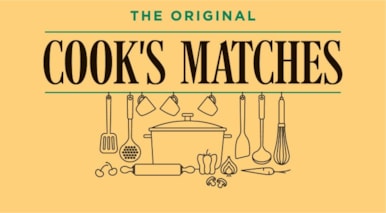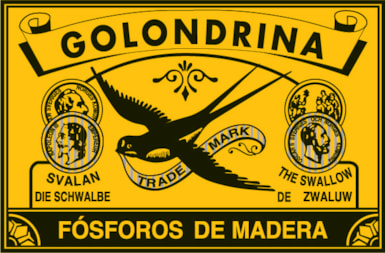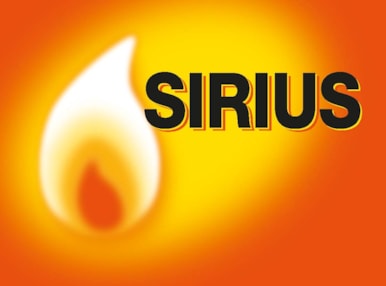- Manufactures 200 million matches every day
- We have over 175 brands worldwide
- World-leading manufacturer of matches
Products and brands

Solstickan
The Solstickefonden (the Solstickan Fund) was established in 1936 to help children and the elderly. The artist, Einar Nerman, was commissioned to design a label for the box and he created Solstickepojken (the Solstickan Boy), now one of Sweden’s most recognized works. Some of the proceeds from the Solstickan brand are still donated to the Solstickan Fund.
Read more
Sampo
Sampo is the leading brand of matches in Finland and dates back to 1933. The name comes from the epic Finnish poem Kalevala, in which Sampo is a magic mill that produces flour, salt and gold. The brand was re-designed in 2018.
Read more
Nitedals
Nitedals Hjelpestikker was founded in 1922 when some of the proceeds of matchbox sales were donated to the Hjelpestikke Fund, which was raising money for charity. The name ‘Nitedal’ comes from a municipality in Norway with the same name, which was once home to a match factory.
Read more
Redheads
Redheads is the most recognized brand of matches in Australia. The iconic logo is instantly recognized by most Australians and ‘Miss Redhead,’ the bombshell that adorns every box of matches, was designed by logo contest winner Rupert Hing in Australia in 1946. The name Redheads was derived from the red striking head of the “Safety Match.” Swedish Match produces 6 million Redheads brand matches each day.
Read more
De Zwaluw
The Dutch company J.W. Attema & Co started importing De Zwaluw brand matches from Sweden into the Netherlands in 1895. Dutch consumers have been buying De Zwaluw matches for over 100 years. De Zwaluw is a well-known brand of matches in the Netherlands and represents quality, warmth, light, tradition and safety.
Read moreBeehive
Beehive, our brand in New Zealand, was launched in the 1930s with a design inspired by the country’s Parliament Building. Once a simple matches brand, Beehive now offers a complete range of lighter products.
Bryant & May
William Bryant and Francis May founded Bryant & May in London in 1844. In 1850, they placed their first order for matches from the Jönköping match factory. Bryant & May also opened a number of match-making factories in the UK, Australia and other parts of the world. The brand is now owned by Swedish Match.
Feudor
After the breakup of the French monopoly in 1989, Swedish Match launched a complete range of Feudor matches in France. Feudor means ‘golden flame’ and symbolizes tradition, reliability and high quality.
England's Glory
England’s Glory has been a brand of matches since 1871. The matchbox design features HMS Devastation, a Victorian battleship that was launched in the same year. England’s Glory is still one of the most popular brands of matches in the UK.
The Flower Basket
The beautiful Flower Basket label originated in the Uddevalla match factory and was registered as a brand in 1913. This label has always been one of the most exported brands to countries in the Middle East such as Oman, the United Arab Emirates, Qatar and Bahrain.
Kalevi Kotkas
Kalevi Kotkas is the name of our matches in Estonia. The name comes from Kalevipoeg – or Kalev’s son – who was a legendary giant in old Estonian folklore who fought with other giants or enemies of the nation. The epic poem was compiled in the mid-1930s by Friedrich Reinhold Kreutzwald.
Le Tre Stelle
Le Tre Stelle is the name of our matches in Italy. This is a relatively new brand, as the first matchbox was launched in 1992. Le Tre Stelle or “the three stars” is synonymous with quality, competence and reliability and all products feature the famous three stars framed in gold against a bright blue background.
The Lion
The Lion brand was first registered in 1885. After the update in 1906, the same design has been used for over a century. The brand is most recognized in African countries such as Gambia.
The Palmtree
The Palmtree derives from the Jönköping Westra match factory and has a beautiful label with unusual colors. The motif, an African in a palm grove carrying gourds on his shoulders, had previously been used by other match factories. The brand was registered in 1884 and is still well-known in countries like Gambia and Senegal.
The Parrot
The colorful Parrot label was designed in 1898 by Fredrik Löwenadler at the Jönköping-Vulcan match factory. It has been a famous brand of matches in Panama since 1911.
Perkuno
Lithuania’s matchstick brand Perkuno was named after Perkunas, one of the most important deities in the Baltic pantheon. In Lithuanian mythology, he is documented as the god of thunder, rain, mountains, oak trees and the sky. He is a bearded man who travels across the sky in a chariot of stone and fire. He holds a lightning bolt in his left hand, and a stone ax in his right.
Quinas
The Quinas brand derives from the 1930s, and the name and logo are based on a national Portuguese legend. The five ‘quinas’ represent the five Moorish kings defeated by D. Afonso Henriques in a famous battle. The figures are featured in many Portuguese symbols, including the country’s flag. Quinas have been, and still are, the leading brand of matches in Portugal.
The Ship
The Ship is a well-known brand of matches and originated in the Södertälje match factory in the early 20th century. The original design is said to be based on a painting by the Swedish naval painter Admiral Jacob ‘Jacques’ Hägg (1839-1931). The UK is now The Ship’s biggest market.
Swan Vestas
Swan Vestas was launched in the UK in 1883. The brand is named after Vesta, the Roman goddess of hearth and home. The matches were originally made from a cotton wick dipped in wax, which made them more stable than other wax matches at the time. In the 1930s, Swan Vestas was the best-selling brand of matches in the UK and is now the only brand specifically requested by name in the UK market.
Three Stars
Three Stars has mainly been an export brand since 1887. The number three, which can be a lucky number or have spiritual, philosophical or biblical significance, was often used on matchbox labels in the 1800s. The word and the symbol of a star are traditionally associated with quality. Three Stars is probably the most famous brand of matches in the world.
The Tiger
The Tiger brand comes from Bryant & May’s match factory in the UK in the early 20th century. The design has been regularly updated since then. The Tiger is still in demand and an important brand of matches in Guinea-Conakry in Africa.
Tordenskjold
Peter Wessel Tordenskjold (1691-1720) was a well-known naval officer who took part in many successful battles against the Swedish Navy while serving in the Royal Dano-Norwegian Navy. In the early 20th century, Swedish match exports posed a serious threat to the Danish match industry. The wife of a Danish match factory manager therefore suggested Tordenskjold as a new brand name, because the original Tordenskjold had successfully defeated the Swedes.
Tres Estrellas
Tres Estrellas is a relatively young brand in the world of matches, where brands are usually very old. It was launched in 1994 to create a strong brand in a market without any prominent brands. In 2000, the brand’s design and values were updated. Today, Tres Estrellas is the best-known brand of matches in Spain and a market-leading lighter product.
Union Match
In Belgium, match manufacturing began in 1855. Union Allumetière was founded in Geraardsbergen in 1912, when eight Belgian factories merged. Union Match has been the best-selling brand of matches in Belgium ever since. The yellow box with three flames is instantly recognized by most Belgians, and is synonymous with quality and matches.
De Zwaluw
The Dutch company J.W. Attema & Co started importing De Zwaluw (the swallow) brand matches from Sweden to the Netherlands in 1895. Dutch consumers have been buying De Zwaluw matches for over 100 years. De Zwaluw is now one of the most recognized brands in the Netherlands. The name is a symbol of quality and represents warmth, light, tradition and safety. The matches were produced in Sweden for many years, and the Swedish legacy (Säkerhets tändstickor) is still written clearly on the matchbox.


